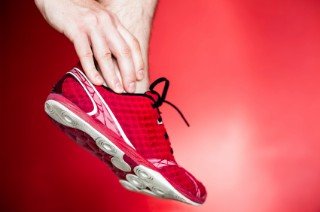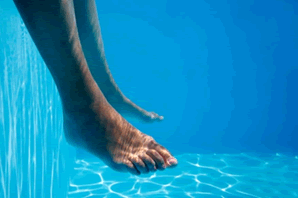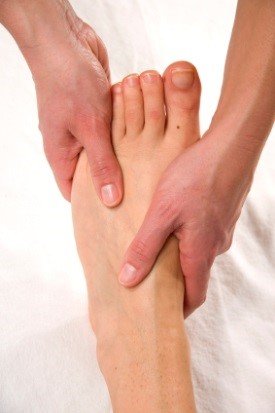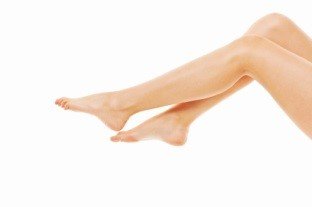Featured Articles
Items filtered by date: May 2015
Swedish Company Designs 3D Camera to find Proper Fitting Shoes
 Volumental, a Swedish based firm, has developed software with the capability to take a lifelike image of the foot for users to find a more exact shoe fit. The image is said to be in 3D with the use of spatial awareness cameras. Founded in the Royal Institute of technology in Stockholm, became refutable need upon the realization that there are many inconsistencies between shoes and the size or shape of the foot. “Our vision is that the system of going around the stores, trying on lots of shoes or jeans and different products and having a problem of not knowing whether you are a medium or large …I think that system will be gone in 10 years. Instead it will be size me,” stated Caroline Walerud co-founder of Volumental.
Volumental, a Swedish based firm, has developed software with the capability to take a lifelike image of the foot for users to find a more exact shoe fit. The image is said to be in 3D with the use of spatial awareness cameras. Founded in the Royal Institute of technology in Stockholm, became refutable need upon the realization that there are many inconsistencies between shoes and the size or shape of the foot. “Our vision is that the system of going around the stores, trying on lots of shoes or jeans and different products and having a problem of not knowing whether you are a medium or large …I think that system will be gone in 10 years. Instead it will be size me,” stated Caroline Walerud co-founder of Volumental.
Finding a proper fitting shoe is important in reducing injuries and preventing foot problems. For more information contact Dr. Sharon L. Pletcher of State College, PA. Our doctor will treat your foot and ankle needs.
Proper Shoe Fitting
A common concern when it comes to foot health, having properly fitted shoes can help prevent injuries to the foot. Out feet affect our posture and gait, which in turn affects the biomechanics and overall bodily structure. With 33 joints, 26 bones, and over 100 ligaments, the potential for serious injury is much greater than one realizes. Although the feet cease growth in adulthood, they still change shape as they mature. Here are come factors to consider when it comes to investing in properly fitting shoes:
- Be sure the shoes fit correctly right away
- Ensure the ball of your foot fits comfortably in the widest portion of the shoes
- Even though they may look fashionable, improperly fitting shoes can either create adverse conditions or exacerbate existing ones you may already have
- Walk along a carpeted surface to ensure the shoes comfortably fit during normal activity
Keeping in mind how shoes fit the biomechanics of your body, keeping properly fit shoes is vitally important. Fortunately, it is not difficult to acquire footwear that fits correctly. Be sure to wear shoes that support the overall structure of your body. Do your feet a favor and invest in several pairs of well-fitted shoes today.
If you have any questions, please feel free to contact our office located in Pennsylvania. We offer the newest diagnostic tools and technologies for your foot and ankle needs.
Proper Shoe Fitting
Proper shoe fitting is one of the most common concerns people have when it comes to the health of their feet. To some this may not seem like a major issue, but the reality is that improperly fitted shoes account for a tremendous amount of injuries to the foot. Because our feet, our posture, and our gait directly affect the bio-mechanics and the overall structure of our entire body, pains and discomforts felt elsewhere within the body can frequently be attributed to improperly fitted footwear. Here are a few factors to consider, which will help you select the proper footwear when shopping.
Do not purchase shoes with the expectation that they will stretch to accommodate the size of your feet. You are looking for shoes that fit correctly right away. If the shoes you purchase are too large and are slipping in the area of the heel while you walk, do not purchase them. Do not look favorably upon shoes that slip with the intention of wearing thicker socks to compensate for the slippage. Make certain that in the widest portion of the shoes, the ball of your foot, fits comfortably in the shoe.
It may be difficult to focus on these things with all the distractions of shopping, or tempting to ignore them because you badly want an uncomfortable shoe. However, if you cannot wear shoes because they hurt too much to use, your money and time will be wasted. When you get your new shoes home, put them on and walk around on a carpeted surface to see ensure your shoe's fit comfortably with normal activity.
With 33 joints, 26 bones, and over 100 ligaments, the potential for damage to the sensitive components within the foot are greater than many people realize. Finding a properly fitting shoe is the single most important factor you can do to help prevent injury and maintain optimal foot health. Adults tend to forget the fact that our feet continue to change as we grow older. So, even though they may no longer experience growth spurts associated with youth, their feet still change shape as they mature.
If you already have problems with your feet, wearing improperly fitted shoes can potentially exacerbate those problems. Fortunately, it does not require a tremendous amount of effort to find shoes that fit correctly. When shopping for shoes, keep in mind that improperly fitted shoes can not only cause a whole host of disorders and problems to occur within the feet themselves—they can affect the entire bio-mechanical structure of the body. Your posture and your stride are based on your feet, so your footwear can have a tremendous impact on the legs, back, and rest of your body. Finding the proper shoe fitting is essential to keep your feet and body healthly.
Swimming a Great Way to Stay In Shape While Reducing Pressure on Feet
 According to Russell Pressler of TriHealth, swimming is a great way to relieve foot pain while staying physically active this summer. Although the average person can experience foot pain any time of year, it is more common for podiatrists to have visitors in the summer due the increased activity the warmer weather brings. For those experiencing a foot injury this summer, it is still possible to remain active this summer with swimming. The activity allows those injured to remain physically fit without adding pressure or overusing the foot.
According to Russell Pressler of TriHealth, swimming is a great way to relieve foot pain while staying physically active this summer. Although the average person can experience foot pain any time of year, it is more common for podiatrists to have visitors in the summer due the increased activity the warmer weather brings. For those experiencing a foot injury this summer, it is still possible to remain active this summer with swimming. The activity allows those injured to remain physically fit without adding pressure or overusing the foot.
Swimming is a great way to exercise the feet. If you have any questions regarding the benefits of swimming on the feet, consider contacting podiatrist Dr. Sharon L. Pletcher from Pennsylvania. Our doctor will explain the unique health advantages this activity has and recommend some simple exercises.
Benefits of Swimming and Foot care
Our feet receive the most stress on a daily basis. Walking, running, and long standing contribute to pain and stress on the feet. Swimming helps promote circulation and keep the body feeling great and healthy.
Benefits of swimming:
Improve blood circulation
- Swimming is a good, safe way to get in extra physical activity and improve circulation, without causing further trauma to the feet.
Relieve aches or pains
- It takes all the pressure off of them, allowing the feet to relax and recover, and improves blood flow to the
Circulation overall for diabetics
- Swimming contributes to blood flow, and increase oxygen levels within the body.
Reduce foot inflammation
- Swimming in warm water can increase blood flow and make it easier to move and stretch the afflicted foot. The feet are also exposed in water, giving them much needed air.
Swimming the helpful alternative:
Many people like the elderly and diabetics suffer from weakened muscles and joints. A water sport like swimming will support the body, thus allowing him or her to move freely. Blood flow circulation is a main trigger to tired inflamed feet.
If you have any questions please feel free to contact our office located in State College, PA. We offer the newest diagnostic and treatment technologies for all your foot and ankle needs.
Swimming and Your Feet
If our feet could talk, they would complain about all the walking, running and long standing we put them through. Our feet deserve a break from the stress put on them, and swimming is a great way to do just that. This activity not only takes all the weight off of the feet, allowing them to relax—there are many other reasons why it is helps take care of feet as well.
Swimming is great for foot health because it improves blood circulation to all the lower extremities. This is especially true for older people or those with injuries, who often cannot exercise as much due to weakened muscles or joints. Water supports much of the weight of the swimmer, relieving aches and allowing him or her to move freely. This gets the blood flowing to the rest of the body, including the feet.
Improving blood flow is also paramount to those with diabetes, who usually have problems with circulation in their feet. Additionally, because of various foot complications, it is often difficult for these people to exercise. Swimming is a good, safe way to get in extra physical activity and improve circulation, without causing further trauma to the feet.
For those that have foot problems due to overuse, swimming can be very beneficial. Athletes and people who are constantly on their feet frequently suffer from injuries like foot tendinitis or ankle sprains. Swimming in cold water can reduce foot inflammation, while swimming in warm water can increase blood flow and make it easier to move and stretch the afflicted foot. Furthermore, because the feet are usually covered during high activity, they tend to sweat a lot. This can cause complications like athlete's foot. Swimming not only allows the feet to be open to the air, it gives them a chance to be cleaned as someone moves around in the water.
Pregnant women who suffer from edema can benefit from swimming, because it allows them to get off their feet for a while. Due to the buoyancy of the human body, they may comfortably float and move around without exerting uncomfortable and often painful pressure on swollen feet and legs. This also lets them to relax sore muscles and joints.
Swimming is, in general, one of the best ways to exercise while protecting and caring for your feet. It takes all the pressure off of them, allowing the feet to relax and recover, and improves blood flow to them. It also makes it easier for someone to stretch and ease an injured foot, which helps heal it and reduces recovery time. If someone has any foot issues at all, or if they simply want to let their feet relax for a while, they should just go swimming.
Quality Shoe Materials can help prevent Foot Problems
 Leo Faramelli of Leo’s Shoe Repair has a lot of experience selling and repairing shoes and has a vast understanding of how certain shoes can cause problems for the feet. “Older shoes are made a lot better. There’s much more real leather. Today, most of the shoe is vinyl to an extent,” Leo states. Today shoes are made with a cheaper grade of leather than is then coated with vinyl and plastic. The shoes look great but that are not as quality, putting customers feet at risk for problems such as corns. Shoes made out of real leather will mold to your feet.
Leo Faramelli of Leo’s Shoe Repair has a lot of experience selling and repairing shoes and has a vast understanding of how certain shoes can cause problems for the feet. “Older shoes are made a lot better. There’s much more real leather. Today, most of the shoe is vinyl to an extent,” Leo states. Today shoes are made with a cheaper grade of leather than is then coated with vinyl and plastic. The shoes look great but that are not as quality, putting customers feet at risk for problems such as corns. Shoes made out of real leather will mold to your feet.
Shoes that are not properly suited for the feet can cause corns and other podiatric problems. If you have any foot or ankle concerns, contact Dr. Sharon L. Pletcher of Pennsylvania. Our doctor will attend to your foot and ankle needs.
Corns: What are they? And how do you get rid of them?
Corns can be described as areas of the skin that have thickened to the point of becoming painful or irritating. They are often layers and layers of the skin that have become dry and rough, and are normally smaller than calluses.
Ways to Prevent Corns
There are many ways to get rid of painful corns such as wearing:
- Well-fitting socks
- Comfortable shoes that are not tight around your foot
- Shoes that offer support
Treating Corns
Treating corns involves removing the dead skin that has built up in the specific area of the foot. Salicylic acid can help in getting rid of these corns because it dissolves keratin, which is the protein that makes up a good majority of corns. Podiatrists recommend that people with diabetes not use salicylic acid but should consult with their podiatrist regarding the treatment of corns.
If you have any questions feel free to contact our office located in State College, PA. We offer the newest diagnostic tools and technologies to treat your foot and ankle needs.
Read more about Corns on the Feet
What to Know About a Broken Toe
Trauma to the foot, especially the toes, can occur in many ways. Banging them, stubbing them, or dropping something on them are a few different ways this trauma can occur. Given the fact that toes are positioned in front of the feet, they typically sustain the brunt of such trauma. When trauma occurs to a toe, the result can be a painful break or fracture. Another type of trauma that can break a toe is repeated activity that places stress on the toe for prolonged periods of time.
Broken toes can be categorized as either minor or severe fractures. Symptoms of minor toe fractures include throbbing pain, swelling, bruising on the skin and toenail, and the inability to move the toe with ease. Severe toe fractures require medical attention and are indicated when the broken toe appears crooked or disfigured, when there is tingling or numbness in the toe, or when there is an open, bleeding wound present on the toe.
Generally, a minor toe break will heal without long-term complications, but it is important to discontinue activities that put pressure on the toe. It is best to stay off of the injured toe and immediately get a splint or cast to prevent any additional movement of the toe bones. You can also immobilize your toe by placing a small cotton ball between the injured toe and the toe beside it, then taping the two toes together with medical tape. Swelling can be alleviated by placing an ice pack on the broken toe directly as well as elevating your feet above your head.
Severe toe fractures may be treated with a splint, cast, and in some cases, minor surgery; especially when the big toe has been broken. Due to its position and the pressure it endures with daily activity, future complications can occur if the big toe is not properly treated. Pain associated with minor toe fractures can be managed with over-the-counter pain medications, and prescription pain killers may be necessary for severe toe fractures.
The healing time for a broken toe is approximately four to six weeks. In severe cases where the toe becomes infected or requires surgery, healing time can take up to eight weeks or more. While complications associated with a broken toe are immediately apparent, it is important to note that there are rare cases when additional complications, such as osteoarthritis, can develop over time. You should immediately speak with your podiatrist if you think you have broken your toe due to trauma, as they will be able to diagnose the injury and recommend the appropriate treatment options.
Dancing with the Stars Instructor Suffers from Broken Toe during Rehearsal
 Derek Hough, five time champion instructor on Dancing with the Stars, has suffered a broken toe after rehearsing for the show’s 10th anniversary special. Derek will have to stay in Los Angeles until his injuries are rehabilitated. For now his understudy will take over for the New York Spring Spectacular in New York City. As for Dancing with the Stars, Hough was unable to compete with Nastia Liukin, but pro-dancer Sasha Farber stepped in temporarily. “He’ll come back harder, better, faster, stronger,” his co-star stated.
Derek Hough, five time champion instructor on Dancing with the Stars, has suffered a broken toe after rehearsing for the show’s 10th anniversary special. Derek will have to stay in Los Angeles until his injuries are rehabilitated. For now his understudy will take over for the New York Spring Spectacular in New York City. As for Dancing with the Stars, Hough was unable to compete with Nastia Liukin, but pro-dancer Sasha Farber stepped in temporarily. “He’ll come back harder, better, faster, stronger,” his co-star stated.
A broken toe can be very painful and lead to complications if not properly fixed. If you have any concerns contact Dr. Sharon Pletcher of Pennsylvania. Our doctor will treat your foot and ankle needs.
What to Know About a Broken Toe
Although most people try to avoid foot trauma such as banging, stubbing, or dropping heavy objects on their feet, the unfortunate fact is that it is a common occurrence. Given the fact that toes are positioned in front of the feet, they typically sustain the brunt of such trauma. When trauma occurs to a toe, the result can be a painful break (fracture).
Symptoms of a Broken Toe
- throbbing pain
- swelling
- bruising on the skin and toenail
- the inability to move the toe
- toe appears crooked or disfigured
- tingling or numbness in the toe
Generally, it is best to stay off of the injured toe with the affected foot elevated.
Severe toe fractures may be treated with a splint, cast, and in some cases, minor surgery. Due to its position and the pressure it endures with daily activity, future complications can occur if the big toe is not properly treated.
If you have any concerns please feel free to contact our office located in State College, PA. We offer the newest diagnostic tools and technology to treat your foot and ankle needs.




